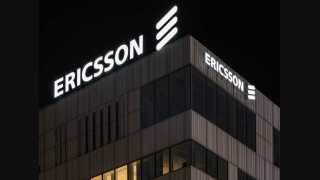Amazon signed three agreements with companies building Small Modular Reactors (SMRs), designed to be flexible sources of low-carbon energy that can be built closer to the grid, providing clean power for both its services and local communities.
Subscribe today for free
“Nuclear is a safe source of carbon-free energy that can help power our operations and meet the growing demands of our customers while helping us progress toward our Climate Pledge commitment to be net-zero carbon across our operations by 2040,” said Matt Garman, CEO of AWS.
The first of its deals, signed with Energy Northwest, covers Washington state, the home of Amazon’s Seattle headquarters.
Energy Northwest will provide Amazon with four SMRs which will initially generate 320MW of power, which could rise to 960MW — enough to power the equivalent of more than 770,000 US homes.
Amazon has also signed ties with SMR developer X-energy to further support its energy projects in the northwest US.
X-energy technology will be used to support the development of SMR equipment capable of providing more than five gigawatts of nuclear energy.
In Virginia, the home of Amazon’s second headquarters, the company signed an agreement with Dominion Energy to explore the development of an SMR project near Dominion’s existing North Anna nuclear power station.
The Virginia project aims to bring at least 300MW of power to the region.
“Our agreements will encourage the construction of new nuclear technologies that will generate energy for decades to come,” Garman added.
Why are hyperscalers snapping up nuclear reactors?
Amazon is the latest hyperscaler to have purchased SMRs — the second this week after Google purchased modular nuclear reactors from Karios to power its data centres.
The obvious answer is energy demands: Data centre operators use up enormous amounts of electricity to keep their servers running, more so with the increasing demand for high-intensity workloads for training and running inference for AI.
SMRs like the ones bought by Amazon and Google can be used to generate power and process heat while being placed directly on-site or near facilities like data centres.
The reactors are also providing stable, long-term energy for operators, enabling them to meet clean energy targets while also reducing dependencies on the local grid.
Hyperscalers have been interested for some time in nuclear power, with Amazon purchasing a data centre campus located next to a nuclear power plant in Pennsylvania earlier this year.
However, with increased investments in infrastructure, like Amazon’s recent expansions in the UK, Saudi Arabia, and Mexico, the company's pursuit of power has intensified.
Amazon’s nuclear deals are designed to support its pledge to match all of the electricity consumed by its global operations with 100% renewable energy. The company suggested all of the electricity consumed by its 2023 operations, including its data centres, were matched with renewable energy.
Beyond increasing capacity, Amazon said its investments in nuclear power will provide economic boosts for local communities, such as up to 1,000 temporary construction jobs and as many as 100+ permanent jobs just for its Energy Northwest project.
“SMRs and fusion energy can play critical roles in providing consumers and businesses reliable zero-emission energy,” said Jay Inslee, the governor of Washington state.
The demand for nuclear also preserves existing older nuclear sites that were set for decommissioning, such as Microsoft’s revival of a unit at the infamous Three Mile Island nuclear power plant.
RELATED STORIES
Amazon buys nuclear data centre campus for $650 million
Google goes nuclear: Mini reactors to power US data centres by 2030
Microsoft revives Three Mile Island nuclear site to power its data centres






